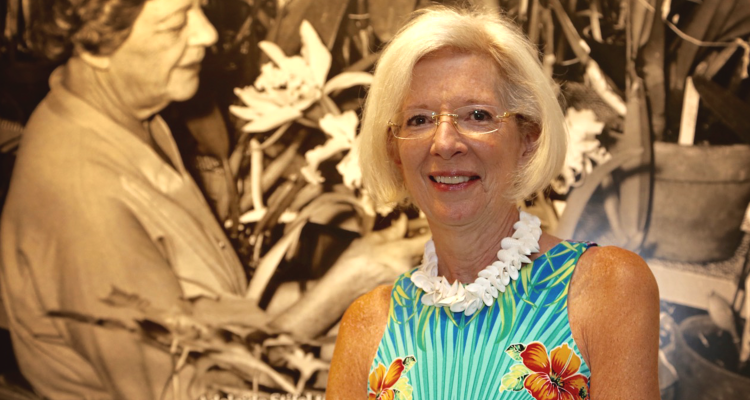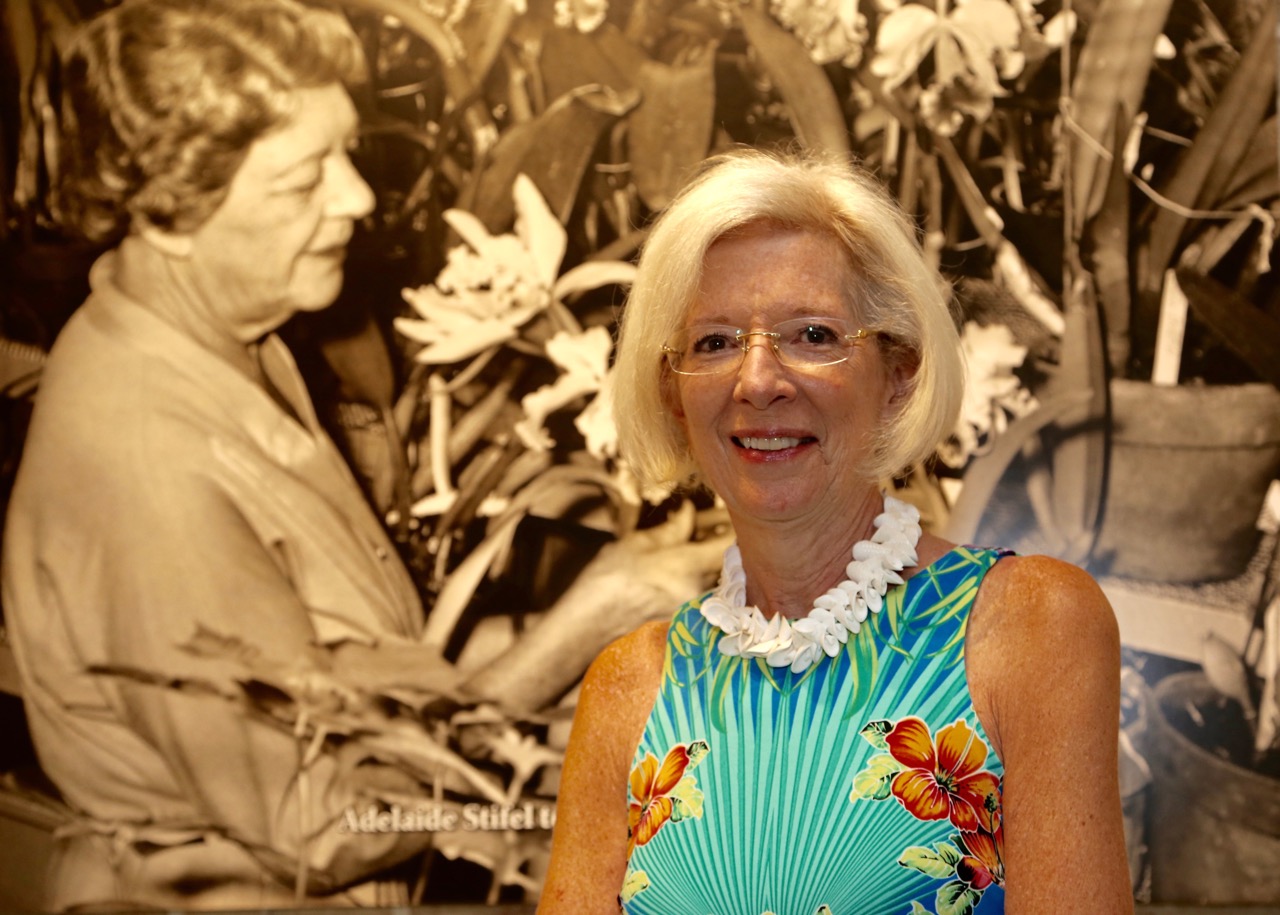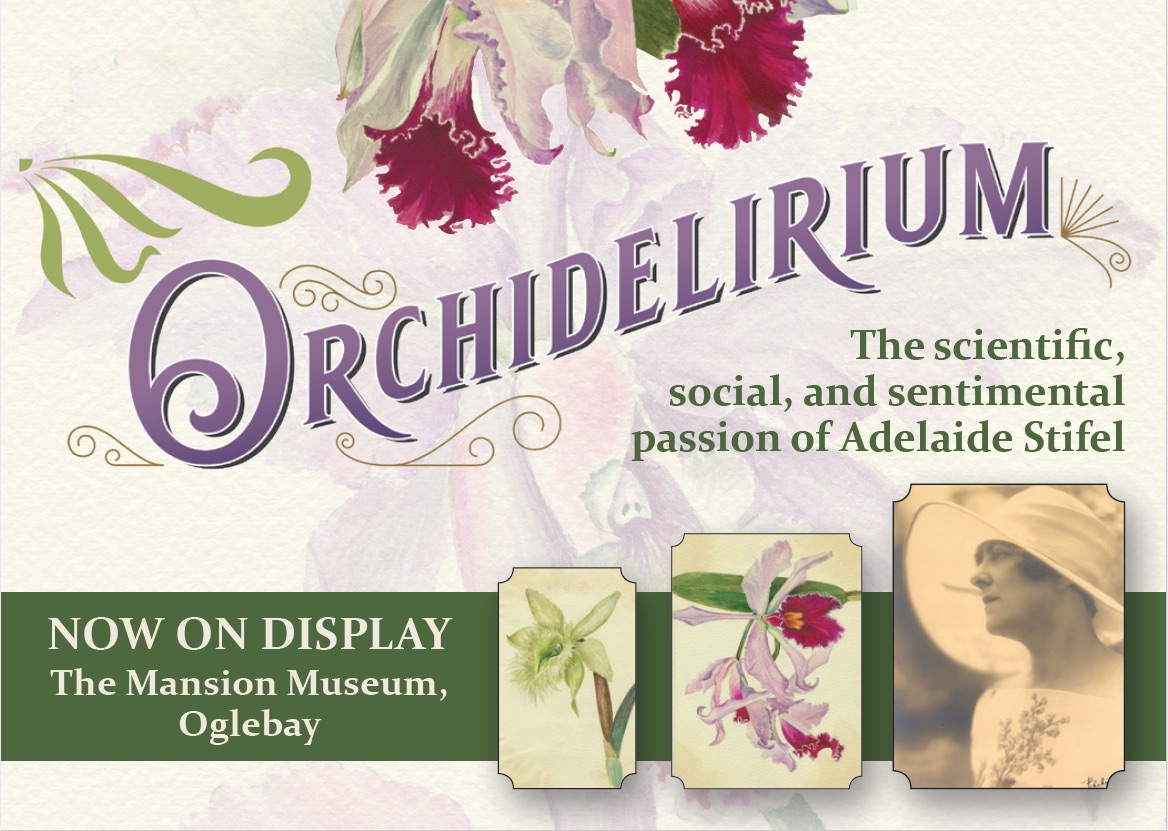The title of Oglebay Institute’s current exhibit — “Orchidelirium” — suggests Victorian mania, but its true inspiration draws upon a steadying influence of scientific knowledge and artistic sensibility.
The Mansion Museum’s display, on view through October, represents a small sample of the meticulous records and detailed paintings created by Wheeling native Adelaide Flaccus Stifel as she cultivated orchids and developed hybrids of the exotic flower in the mid-20th century.
“Orchid fever” had broken out in the early 1800s when the first specimens arrived in Europe. By the Victorian era, the growing of orchids had become a huge fad.
More recently, the Victorian horticultural passion provided inspiration for the New York Botanical Garden’s 2016 orchid show, also called “Orchidelirium.”
THE CULT OF THE ORCHID
Describing the bygone obsession, Kara Yenkevich, curator for the Museums of Oglebay Institute, stated, “Beautiful, rare and difficult to grow, orchids were a subject of continued fascination throughout the 19th century and into the 20th. Termed ‘The Cult of the Orchid’ by newspapers, the exotic flowers inspired frenzies at horticultural shows, netted outlandish prices for dealers, earned regular headlines and drove orchid hunters to risk death in search of new species.”
The curator related, “When orchidelirium spread from England to the U.S. in the mid-19th century, men were the majority of private orchid collectors, importers and staff at botanical gardens and conservatories. Professional botany and gardening was still a mostly male activity, but women were just as obsessed with orchids and found their own ways to participate.
“When orchids became cheaper and more available in the 1900s, more women were able to become home cultivators and join orchid groups and societies. America’s first garden clubs were formed by women. Adelaide was an officer in the Garden Club of Wheeling and a member of the American Orchid Society,” Yenkevich said.
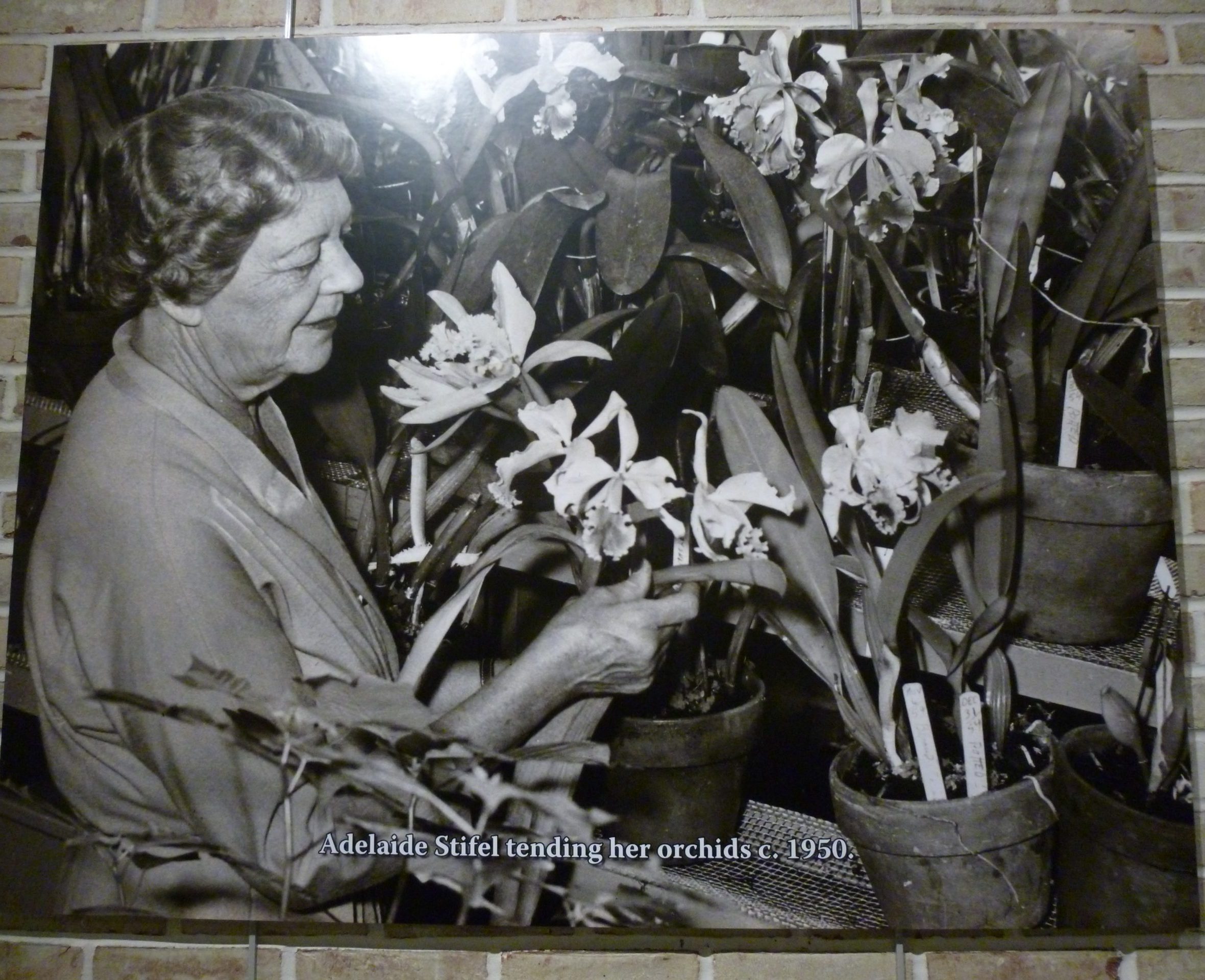
GARDENING MEETS ART
Propelled beyond her Victorian childhood, Stifel combined gardening skills and artistic talent to grow orchids in a greenhouse adjacent to her family’s home. Stifel’s fascination with orchids began in 1937 when, after visiting her sister-in-law, she brought one of the exotic plants home from Egypt.
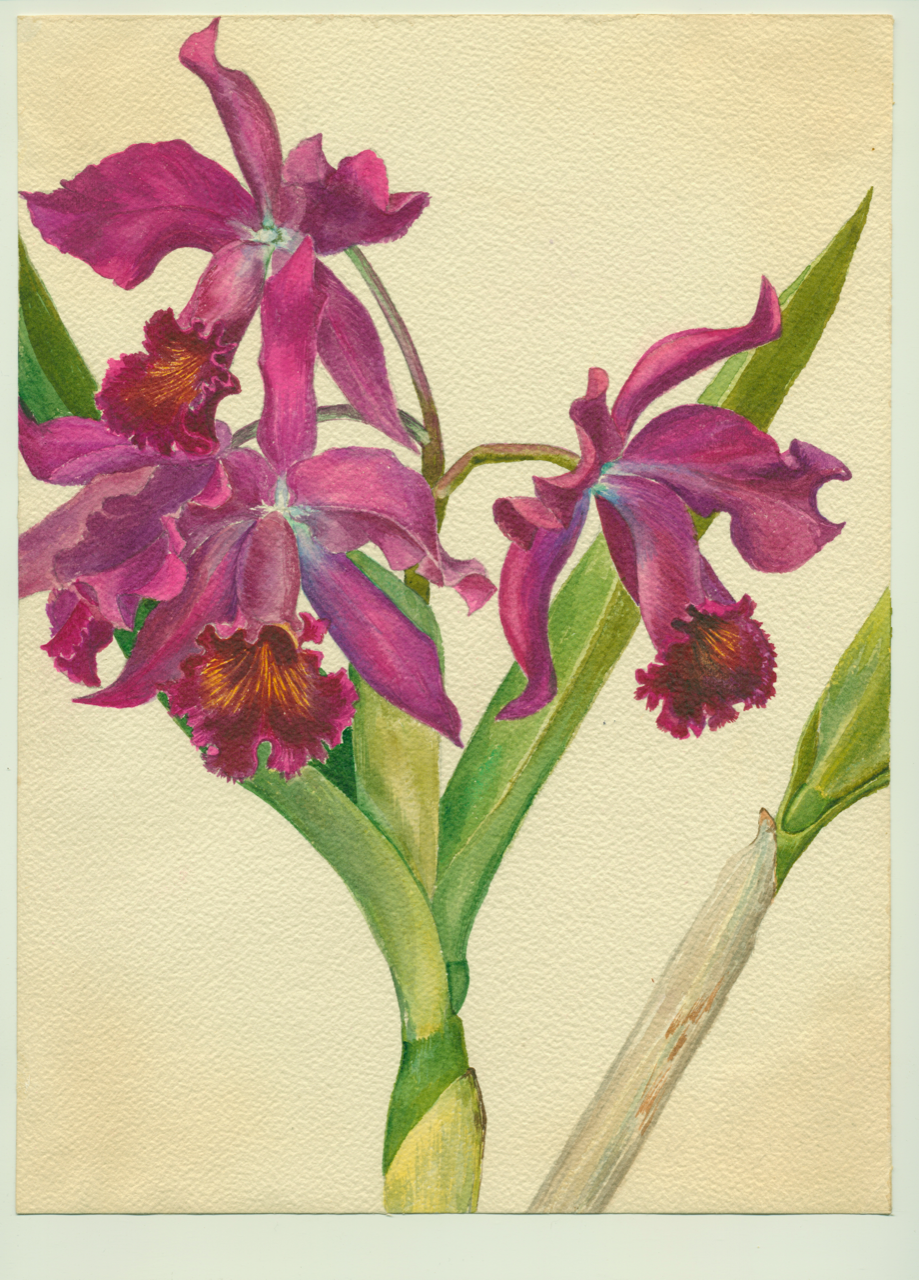 Soon, she started buying orchids from horticultural companies as her interest grew. Friends contributed to her collection by acquiring exotic specimens from their travels in South America and other locales. Stifel cultivated more than 300 distinct orchids over a 20-year period.
Soon, she started buying orchids from horticultural companies as her interest grew. Friends contributed to her collection by acquiring exotic specimens from their travels in South America and other locales. Stifel cultivated more than 300 distinct orchids over a 20-year period.
“She was able to really expand on an ordinary collection with exotics from other countries,” said her granddaughter, Joan Corson Stamp of Wheeling.
Cultivating and hybridizing orchids became more than a mere hobby for Stifel. She kept a detailed, hand-written record for each plant, featuring scientific information and listing the recipients and occasions for which the precious flowers were given. She made corsages from the blooms and gave orchids to family and friends; she also contributed the beautiful flowers for charitable purposes.
The avid gardener crossbred orchids and gave personalized names to the new breeds. She named hybrids in honor of her husband, Arthur C. Stifel; their daughter, Joan Stifel Corson; and the family’s longtime housekeeper, Marie Blatchley. On a sweet note, hybrids were named “Baby Linda” and “Baby Joan” to celebrate the birth of her granddaughters.
Between 1937 and 1957, Stifel filled five binders with more than 600 pages of records related to her orchids. “She painted every orchid when it bloomed,” Stamp said.
Stifel’s hand-written pages and paintings are now in Stamp’s possession. Oglebay Institute’s exhibit features 25 of Stifel’s watercolor and gouache paintings, displayed beside her notes for each image.
“I have preserved the orchid books with the help of Christin Byrum (director of the Museums of Oglebay Institute). It’s a collection of about 300 paintings,” Stamp related.
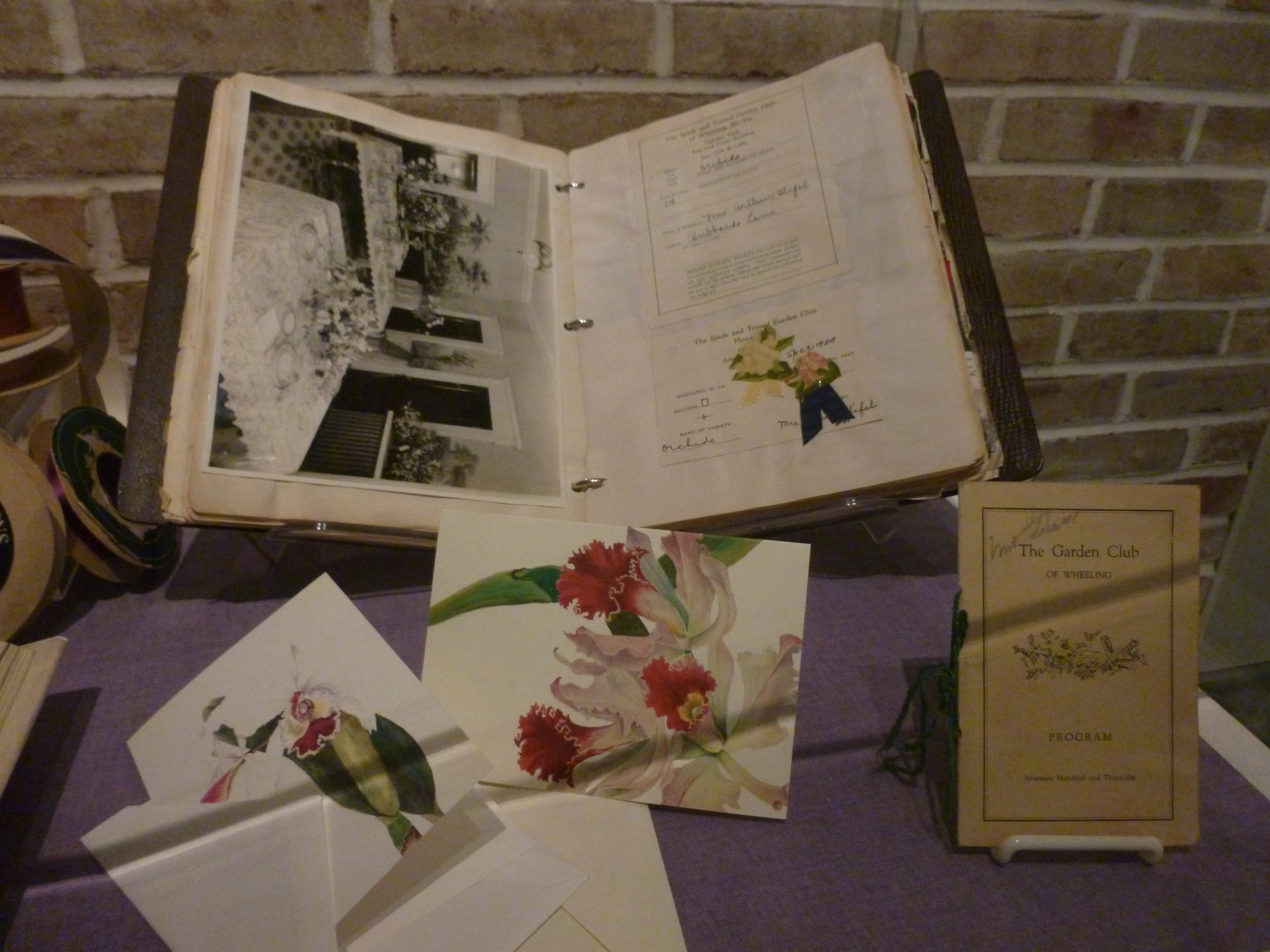
Stifel also kept an album of photographs, ribbons and ephemera related to her membership in Wheeling’s garden club. She was part of a large group of women who practiced flower arranging and staged shows and contests.
While Stifel probably shared knowledge of orchid cultivation with her fellow clubwomen, “no one else that we know of had the interest in orchids to the degree that my grandmother did,” Stamp said.
VIVID MEMORIES
Stamp, who was about 8 years old when her grandmother died, has vivid memories of seeing “hundreds of orchids,” along with gardenias, blooming in the greenhouse.
“I grew up in Washington, D.C., and we would come to Wheeling frequently and visit my grandparents,” Stamp said. “I remember my sister and I running around in the greenhouse, but we were not allowed to touch anything. It was so hot and humid in there.”
Stamp recalls that her grandparents also had a rose bed, fruit trees and a fishpond on their property along Hubbard Lane.
“It was a great place to visit and grow up and run around,” she remarked.
The Stifels’ home, which had a stucco exterior and red tiled roof, was located on the site of the present-day Williamsburg Condominiums.
It was thought that Stifel’s orchids were given to Phipps Conservatory in Pittsburgh after her death in 1959. However, no records of gifts to Phipps in the 1950s were kept.
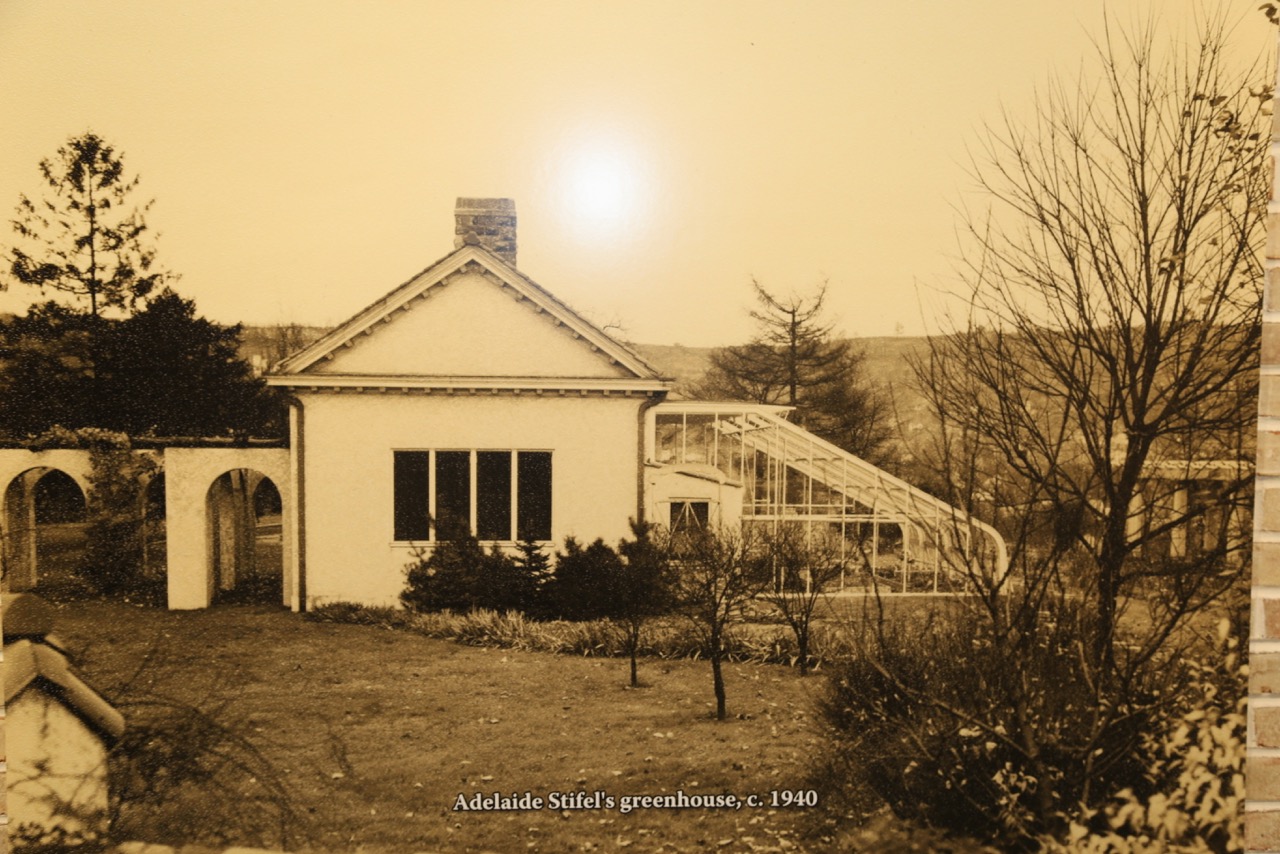
CULTIVATING THE TRADITION
Carrying on the family tradition in a limited way, Stamp has a few orchids at home, while her daughter, Elizabeth Stamp, grows one or two orchids at a time in California.
“My grandmother was an untrained artist,” Stamp said. “There are a lot of artists, architects, painters and sculptors in the family. … There are a lot of artistic genes in the family that I think come from my grandmother.”
Reflecting on Stifel’s legacy, Stamp said, “I admire the fact that my grandmother took this hobby to the degree of involvement for a woman of that day.”
She said her grandparents “were constantly traveling,” to visit their daughter and three sons and other relatives, and going on business trips for the Stifel Calico company. Once, they even took a Zeppelin aircraft flight from Akron, Ohio, to Spain.
“I don’t know how she had time to paint all the orchids and do the record-keeping,” her granddaughter remarked.
Stamp said Byrum and Yenkevich have done “a magnificent job” in mounting the new exhibit. Wheeling photographer Neal Warren framed the paintings that are being shown. In addition, large reproductions of other examples of Stifel’s paintings are displayed as floor medallions in the gallery room.
“They did an excellent job in the presentation. It’s very personal. It opened a story of a life and revealed a very interesting hobby that a woman had,” Stamp said.
She added, “I was really honored that they were interested in showing it. … I think it’s a fun exhibit, especially if you are a gardener.”
“Orchidelirium” can be viewed through October with admission to the Mansion Museum. Single museum admission is $10 and dual admission (Mansion and Glass museums) is $15. Youth, age 17 and younger, are admitted free of charge, but must be accompanied by an adult.
The Museums of Oglebay Institute are open from 10 a.m. to 5 p.m. daily.
• Linda S. Comins is a Wheeling resident and has 43 years of experience as a professional writer. She is the editor of Dayspring, the newspaper of the Episcopal Diocese of West Virginia, and serves as communications coordinator for St. Matthew’s Episcopal Church in Wheeling.


